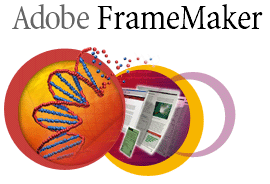What's the Best Way to Learn Structured XML-Based FrameMaker?
© 2009 Ugur Akinci
FrameMaker (FM) is a great and popular technical writing tool with XML-based single-sourcing functionality. But its learning curve is rather steep.
So how does a technical writer teach him- or herself structured FrameMaker? What’s the best way to learn?
Here are my suggestions, based on my ten years of Fortune 500 experience.
1) Begin with the basic facts about XML (Extended Markup Language). Learn the difference between “well-formed” and “valid” XML.
2) Find out how to switch your FrameMaker to “Structured” mode.
3) Next, learn what a DTD (Document Type Definition) is. Learn the difference between DTD and Adobe’s proprietary EDD (Element Definition Document) files.
4) Learn how to export an EDD from an already structured FM document.
5) Learn how read and understand an EDD file. Learn how elements are defined and formatted inside the EDD. Learn how to use a Formatting Template with an EDD.
 FrameMaker (FM) is a great and popular technical writing tool with XML-based single-sourcing functionality. But its learning curve is rather steep.
FrameMaker (FM) is a great and popular technical writing tool with XML-based single-sourcing functionality. But its learning curve is rather steep.
6) Prepare your document template so that you know exactly what the main components of your document are. Do you have an Introduction follow the Title? Is the Header1 followed by body text or Sub-header1? Will a “Note” look the same regardless of whether it’s a part of the Body or a Table Cell? Once you have that written down, start learning how to write an EDD from scratch.
7) Learn how what Read/Write Rules is all about and how it’s used with an EDD.
8] Learn how to assign attributes to individual elements.
9) Learn how to derive a DTD from an EDD.
10) Learn how to import an EDD.
11) Learn how to generate and modify a Conversion Table to convert an unstructured FM file into a structured one.
12) Learn what an XLS (Extensible Style Sheet) is; why it is needed; and how it is used to format your XML file.
Learning structured FM is not easy but it’ll be worth the effort if you are to survive and prosper in the new competitive world of technical communications.
